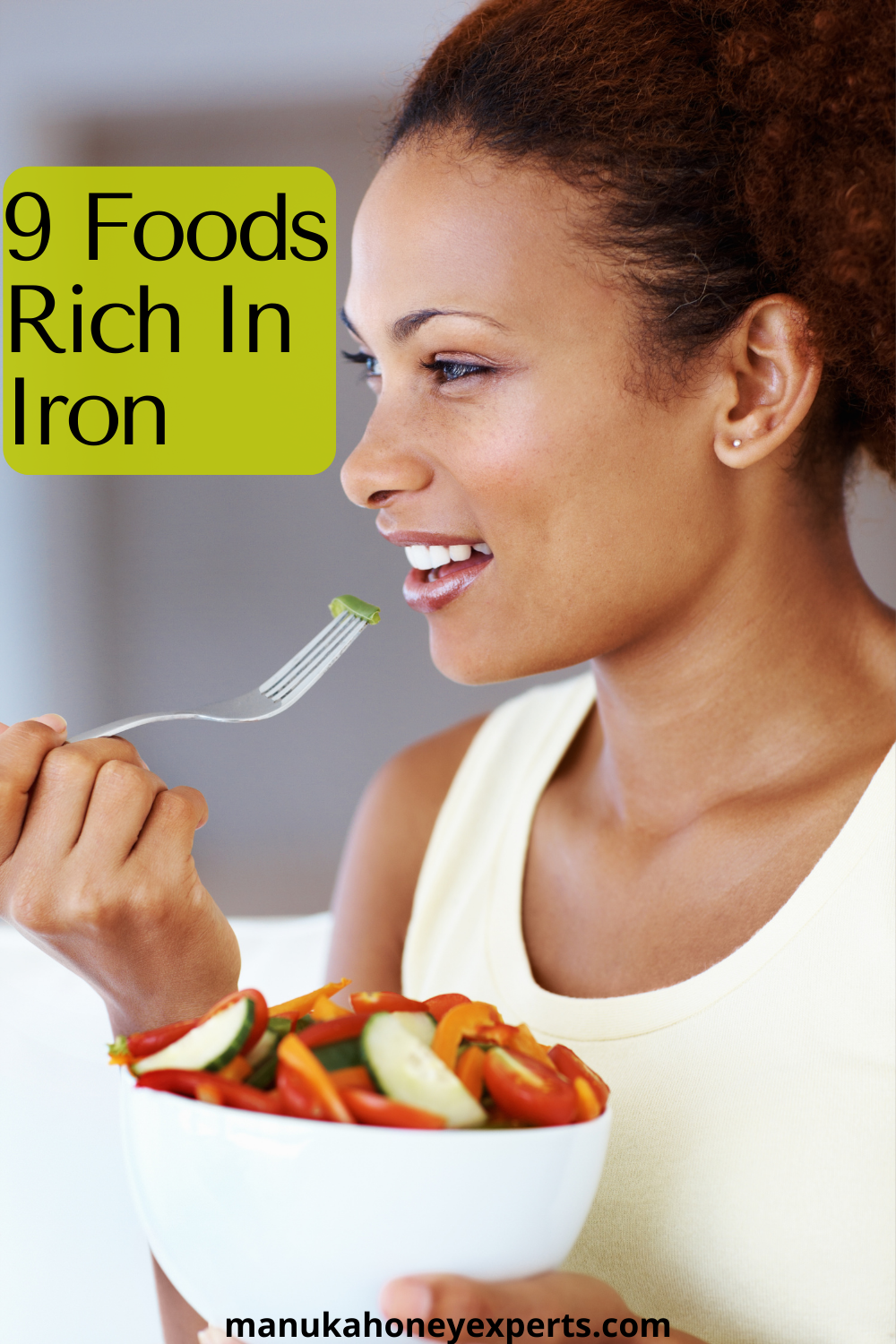Iron is a mineral that serves several essential functions, its main one being to carry oxygen throughout your body as a part of the red cell. It’s a vital nutrient, implying you must get it from food. The Daily Worth (DV) is 18 mg. A shortage can occur if your consumption is too low to replace the amount you lose every day.
Below are 9 of the best food sources of iron:
1. Dark Chocolate
A 1-ounce serving consists of 3.4 mg of iron, which is 19% of the DV. This little serving likewise provides you with 56% and 15% of the DVs for copper and magnesium, respectively.
A study discovered that cocoa powder and dark chocolate had more antioxidant activity than powders and juices made from acai berries and blueberries. Studies have also revealed that chocolate has beneficial impact on cholesterol and may decrease your risk of cardiac arrest and strokes.
2. Broccoli
A cup of broccoli includes 1 mg of iron, 6% of the DV. What’s more, a serving of broccoli also packs 112% of the DV for vitamin C, helping your body absorb the iron better.
Broccoli is a cruciferous vegetable family member, which also includes cauliflower, Brussels sprouts, kale, and cabbage. Cruciferous vegetables contain indole, sulforaphane, and glucosinolates, which are plant compounds believed to protect against cancer.
3. Turkey
Turkey is an excellent source of iron, specifically dark turkey meat. A 3.5-ounce portion of dark turkey meat has 1.4 mg of iron, 8% of the DV.
Dark turkey meat also packs a remarkable 28 grams of protein per serving and several B minerals and vitamins; 32% of the DV for zinc and 57% of the DV for selenium. Consuming high protein foods like turkey might aid weight management, as protein makes you feel full and increases your metabolic rate after a meal.
High protein consumption can likewise help avoid the muscle loss that occurs during weight-loss and the aging process.
4. Quinoa
One cup of quinoa has 2.8 mg of iron, which is 16% of the DV. Furthermore, quinoa contains no gluten, making it an excellent option for individuals with celiac disease or other types of gluten intolerance.
Quinoa is also higher in protein than many other grains and rich in folate, magnesium, copper, manganese, and many other nutrients. Also, quinoa has more antioxidant than numerous other grains. Antioxidants help protect your cells from damage from free radicals, which are formed during the metabolic process.
5. Pumpkin Seeds
Pumpkin seeds are a delicious and easy snack. A serving of pumpkin seeds has 2.5 mg of iron, 14% of the DV. Also, pumpkin seeds are a great source of vitamin K, zinc, and manganese. They’re also amongst the very best sources of magnesium which is a mineral that many people lack.
A 1-ounce serving contains 40% of the DV for magnesium, reducing your risk of diabetes, depression, and insulin resistance.
6. Red Meats
Red meat is satisfying and healthy. A 3.5-ounce serving of hamburger contains 2.7 mg of iron, which is 15% of the DV. Meat is also abundant in protein, zinc, selenium, and numerous B vitamins. Scientists have suggested that iron shortage might be less likely in individuals who consume meat, poultry, and fish regularly.
Red meat is most likely the single most easily available source of heme iron, possibly making it a crucial food for people who are vulnerable to anemia.
7. Organ Meats
Organ meats are incredibly nutritious. Popular types include liver, kidneys, brain, and heart – all of which are high in iron. For example, a 3.5-ounce serving of beef liver has 6.5 mg of iron, or 36% of the DV. Organ meats are also high in protein and abundant in B vitamins, copper, and selenium.
The liver is exceptionally high in vitamin A, providing an impressive 1,049% of the DV per 3.5-ounce serving. What’s more, organ meats are among the best sources of choline, an essential nutrient for brain and liver health that many people do not get enough of.
8. Spinach
Spinach provides lots of health benefits. About 3.5 ounces of raw spinach has 2.7 mg of iron or 15% of the DV. Spinach is likewise abundant in vitamin C. This is important because vitamin C considerably boosts iron absorption.
Spinach is likewise rich in antioxidants called carotenoids, which may minimize your risk of cancer, reduce inflammation, and protect your eyes from disease. Consuming spinach and other leafy greens with fat helps your body soak up the carotenoids, making sure to eat healthy fat like olive oil with your spinach.
9. Shellfish
Shellfish are nutritious and delicious. All shellfish are high in iron; however, clams, mussels, and oysters are excellent sources. A 3.5-ounce serving of clams may contain up to 3 mg of iron, 17% of the DV.
The iron content of clams is very varied, and some types may contain much lower amounts. The iron in shellfish is heme iron, which your body absorbs more quickly than the non-heme iron. Non-heme iron are found in plants.

